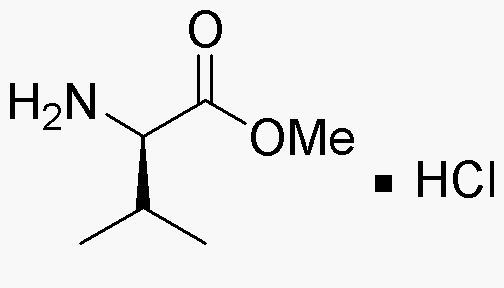D-Valine methyl ester hydrochloride is widely utilized in research focused on:
- Pharmaceutical Development: This compound serves as a building block in the synthesis of various pharmaceuticals, particularly those targeting neurological disorders, due to its structural similarity to amino acids.
- Peptide Synthesis: It is commonly used in the production of peptides, which are crucial in drug formulation and biological research, enhancing the efficiency of peptide coupling reactions.
- Biochemical Research: Researchers utilize this compound to study metabolic pathways and protein interactions, providing insights into cellular functions and disease mechanisms.
- Food Industry: D-Valine methyl ester hydrochloride can be employed as a flavoring agent or nutritional supplement, contributing to the enhancement of food products.
- Cosmetic Formulations: This chemical is also explored in cosmetic applications for its potential benefits in skin care products, offering moisturizing and anti-aging properties.
General Information
Properties
Safety and Regulations
Applications
D-Valine methyl ester hydrochloride is widely utilized in research focused on:
- Pharmaceutical Development: This compound serves as a building block in the synthesis of various pharmaceuticals, particularly those targeting neurological disorders, due to its structural similarity to amino acids.
- Peptide Synthesis: It is commonly used in the production of peptides, which are crucial in drug formulation and biological research, enhancing the efficiency of peptide coupling reactions.
- Biochemical Research: Researchers utilize this compound to study metabolic pathways and protein interactions, providing insights into cellular functions and disease mechanisms.
- Food Industry: D-Valine methyl ester hydrochloride can be employed as a flavoring agent or nutritional supplement, contributing to the enhancement of food products.
- Cosmetic Formulations: This chemical is also explored in cosmetic applications for its potential benefits in skin care products, offering moisturizing and anti-aging properties.
Documents
Safety Data Sheets (SDS)
The SDS provides comprehensive safety information on handling, storage, and disposal of the product.
Product Specification (PS)
The PS provides a comprehensive breakdown of the product’s properties, including chemical composition, physical state, purity, and storage requirements. It also details acceptable quality ranges and the product's intended applications.
Certificates of Analysis (COA)
Search for Certificates of Analysis (COA) by entering the products Lot Number. Lot and Batch Numbers can be found on a product’s label following the words ‘Lot’ or ‘Batch’.
*Catalog Number
*Lot Number
Certificates Of Origin (COO)
This COO confirms the country where the product was manufactured, and also details the materials and components used in it and whether it is derived from natural, synthetic, or other specific sources. This certificate may be required for customs, trade, and regulatory compliance.
*Catalog Number
*Lot Number
Safety Data Sheets (SDS)
The SDS provides comprehensive safety information on handling, storage, and disposal of the product.
DownloadProduct Specification (PS)
The PS provides a comprehensive breakdown of the product’s properties, including chemical composition, physical state, purity, and storage requirements. It also details acceptable quality ranges and the product's intended applications.
DownloadCertificates of Analysis (COA)
Search for Certificates of Analysis (COA) by entering the products Lot Number. Lot and Batch Numbers can be found on a product’s label following the words ‘Lot’ or ‘Batch’.
*Catalog Number
*Lot Number
Certificates Of Origin (COO)
This COO confirms the country where the product was manufactured, and also details the materials and components used in it and whether it is derived from natural, synthetic, or other specific sources. This certificate may be required for customs, trade, and regulatory compliance.


